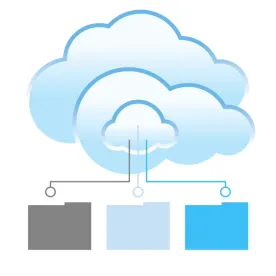Migrating applications and workloads to a cloud provider has obvious benefits—scalability, flexibility, efficiency, and cost considerations are all driving the dramatic increase in the use of cloud services. However, as MarkLogic CEO Gary Bloom discusses in a recent article, once enterprises start utilizing proprietary application programming interfaces (APIs) and other vendor-specific development and integration tools, they can easily become locked into their cloud providers.
Technology
One practical way to mitigate the risk of vendor lock-in for cloud services is to build applications using “cloud neutral” technology platforms that can work on internal systems as well as multiple cloud providers, including maintaining data in a readily accessible, nonproprietary format. Designing cloud services around a neutral, portable solution carries the potential benefits of the ability to take applications “in-house” based on future business considerations, a wider pool of potential vendors to consider when seeking a new service provider, and the ability to quickly and more easily transition workloads in the event of poor performance or a data breach. Additionally, without building cloud applications on provider-specific proprietary APIs, enterprises face potentially far lower transition and implementation costs associated with migrating or deploying other applications to the cloud or another service provider without the need to rewrite applications.
Contract Strategies
In addition to considering cloud technologies that enable flexibility and ease of migration, enterprises should ensure that their contracts with cloud vendors contain terms that provide the flexibility and necessary support to re-source and in-source cloud applications. Contracts should require vendors to provide termination assistance including the provision of hosting services for a set period following termination or expiration of the services agreement, and assistance to facilitate the migration of applications in-house or to a new provider. Among other termination assistance requirements, the agreement should specify that the existing vendor is required to cooperate with any successor provider or other third parties to facilitate the transition, including preserving and providing access to customer data. To support a cost-efficient transition, pricing for cloud services should be flexible enough to account for ramp-down of services during transition periods, and responsibilities and fees for additional transition services should be established upfront.
The efficiency and low cost of using cloud services, including form vendor agreements that are provided with such services, can lead to vendor lock-in, making it difficult and expensive to migrate applications in-house or to a new provider. The upfront use of technology and transition provisions can help customers maintain flexibility as they move their applications to the cloud.




 />i
/>i

